|
 Secure Site
Secure Site
|
 |
Archive for the 'Japanese Inspired Zen Clocks' Category
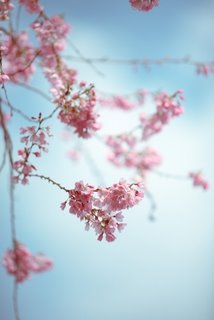 Cherry Blossoms Kobayashi Issa (June 15, 1763 – January 5, 1828), was a Japanese poet and lay Buddhist priest of the Jodo Shinshu sect known for his haiku poems and journals. He is better known as simply Issa, a pen name meaning Cup-of-tea. He is regarded as one of the four haiku masters in Japan, along with Basho, Buson and Shiki.
One of Issa’s haiku, translated by D.T. Suzuki, was written during a period of Issa’s life when he was penniless and deep in debt. It reads:
- Trusting the Buddha (Amida), good and bad,
- I bid farewell
- To the departing year.
-
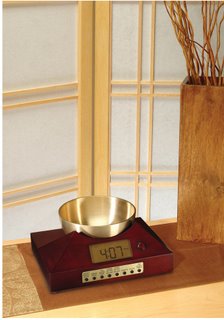 Zen Timepiece in Cherry Finish adapted from wikipedia.org
Now & Zen
1638 Pearl Street
Boulder, CO 80302
-
Posted in Japanese Inspired Zen Clocks
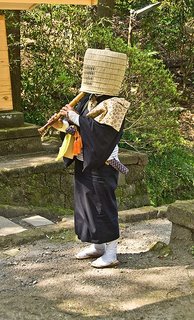 A Buddhist monk begging as a komusō A komusō, was a Japanese begging monk of the Fuke school of Zen Buddhism, during the Edo period of 1600-1868. Komusō were characterised by the straw basket (a sedge or reed hood named a tengai) worn on the head, manifesting the absence of specific ego. They are also known for playing solo pieces on the shakuhachi (a type of Japanese bamboo flute).
These pieces, called honkyoku (“original pieces”) were played during a meditative practice called suizen for alms, as a method of attaining enlightenment, and as a healing modality. The Japanese government introduced reforms after the Edo period, abolishing the Fukè sect. Records of the musical repertoire survived, and are being revived in the 20th century.
adapted from wikipedia.org
 Kanji Dial Face in Honey Finish, Zen Alarm Clocks with a progressive chime
Now & Zen
1638 Pearl Street
Boulder, CO 80302
Posted in Chime Alarm Clocks, Japanese Inspired Zen Clocks, Meditation Timers, Meditation Tools, mindfulness practice, Natural Awakening, Now & Zen Alarm Clocks, zen monks
 Bamboo trees in Kyoto, Japan Bamboo are a group of perennial evergreen (except for certain temperate species) plants in the true grass family Poaceae, subfamily Bambusoideae, tribe Bambuseae. Giant bamboos are the largest members of the grass family.
Bamboos are also the fastest growing woody plants in the world. They are capable of growing up to 60 centimeters (24 in.) or more per day due to a unique rhizome-dependent system. However, this astounding growth rate is highly dependent on local soil and climatic conditions.
Bamboos are of notable economic and cultural significance in East Asia and South East Asia where they are used extensively in everyday life as building materials, as a food source and as a highly versatile raw product.
adapted from wikipedia.org
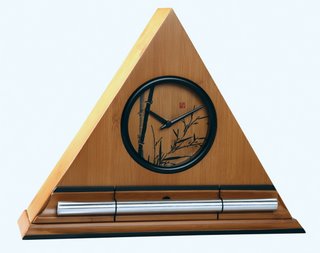 Bamboo Chime Alarm Clock, for a progressive awakening
Now & Zen
1638 Pearl Street
Boulder, CO 80302
Posted in Bamboo Chime Clocks, Japanese Inspired Zen Clocks, Meditation Timers, Meditation Tools, Natural Awakening, Now & Zen Alarm Clocks, Progressive Awakening, Zen Timers
 Hana Wachigai, the crest of the Izumo Genji clans (Oki, Enya, Takaoka) Mon, also monshō, mondokoro, and kamon, are Japanese heradic symbols. Mon may refer to any symbol, while kamon and mondokoro refer specifically to family symbols.
There are no set rules in the design of a mon. It most commonly consists of a roundel encircling a figure of plant, animal, man-made, natural or celestial objects, all abstracted to various degrees.
Religious symbols, geometric shapes and kanji were commonly used as well. Virtually all modern Japanese families have a mon, though modern usage is rare. Many Japanese may no longer recognize their own family’s mon.
adapted from wikipedia.org
 Zen Chime Alarm Clock, Digital Black Lacquer by Now & Zen Now & Zen
1638 Pearl Street
Boulder, CO 80302
(800) 779-6383
Posted in Beauty, Chime Alarm Clocks, Japanese Inspired Zen Clocks
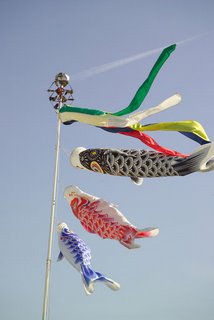 koinobori ornament of Tango no sekku, early summer Koinobori, meaning “carp streamer” in Japanese, are carp-shaped wind socks traditionally flown in Japan to celebrate Tango no Sekku, a traditional calendrical event which is now designated a National holiday called Children’s Day. These wind socks are made by drawing carp patterns on paper, cloth or other nonwoven fabric. They are then allowed to flutter in the wind. They are also known as satsuki-nobori.
There is a famous short Koinobori Song often sung by kids and their families:
Higher than the roof-tops are the koinobori
The large Black Carp is the father
The smaller Golden Carp are the children
They seem to be having fun swimming.
adapted from wikipedia.org
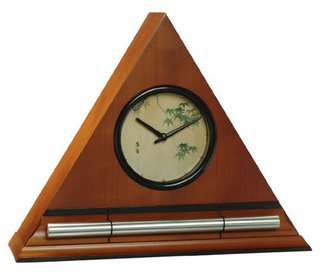 Zen Chime Clock with Japanese Maple Leaves in Honey Finish
Now & Zen
1638 Pearl Street
Boulder, CO 80302
Posted in Japanese Inspired Zen Clocks
 koinobori Tango no Sekku, a traditional calendrical event which is now designated a National holiday, also known as Children’s Day in Japan.
Children’s Day takes place on May 5th. Landscapes across Japan are decorated with koinobori from April to early May, in honor of sons and in the hope that they will grow up healthy and strong.
adapted from wikipedia.org
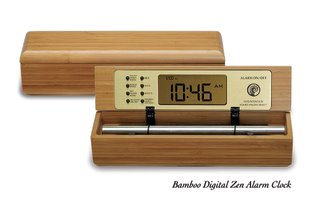 Bamboo Digital Chime Clock, for a progressive awakening Now & Zen
1638 Pearl Street
Boulder, CO 80302
(800) 779-6383
Posted in Japanese Inspired Zen Clocks, Meditation Timers, Meditation Tools
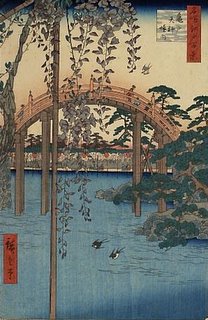 Kamedo Tenjin Shrine: drum bridge in the garden, Hiroshige ukiyo-e During the Asuka period (538-710), gardens were supposed to express Buddhism and Taoism through replicating the mountainous regions in China.
During the Heian period (794-1185), gardens shifted from solely representing religious beliefs to becoming, “a place for ceremonies, amusement, and contemplation” (Miller).
 peter in a japanese garden In the Kamakura and Muromachi periods (1185-1573), a great many gardens were created during these two time periods due to improved garden techniques and the development of Syoinzukuri style. Zen beliefs were also flourishing at this time and had great influences over garden techniques and purposes. Another factor that allowed gardens to flourish stems from the fact that the shoguns simply enjoyed gardens.
After the Muromachi Period, Japanese tea ceremonies became an intricate part of Japanese culture. Sen no Rikyu (1517-1591) created the traditional style of a tea house where there was usually a roji (“dewy path”) leading to the house. Besides the tea houses, gardens constructed in the Edo period (1603-1868) reflected the tastes and style of each individual shogun ruler. Instead of being a religious symbol, gardens shifted to being a symbol of a shogun’s prestige and power (Miller).
adapted from wikipedia.org
 Zen Clocks by Now & Zen Now & Zen
1638 Pearl Street
Boulder, CO 80302
Posted in Japanese Inspired Zen Clocks, Now & Zen Alarm Clocks, Progressive Awakening, Zen Gardens, Zen Timers
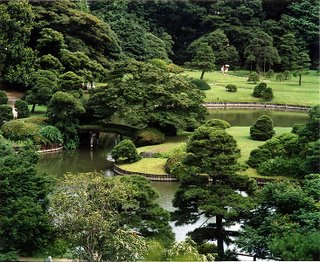 A kaiyu-shiki or strolling garden Chaniwa Gardens are built for holding tea ceremonies. There is usually a tea house where the ceremonies occur, and the styles of both the hut and garden are based on the simple concepts of the sado.
Usually, there are stepping stones leading to the tea house, stone lanterns, and stone basins (tsukubai) where guests purify themselves before a ceremony.
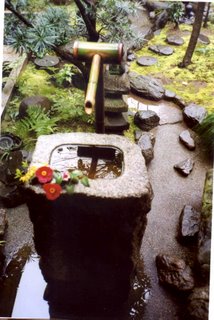 tsukubai Japanese gardens might also fall into one of these styles:
- Kanshoh-style gardens which are viewed from a residence.
- Pond gardens, for viewing from a boat.
- Strolling gardens (kaiyū-shiki), for viewing a sequence of effects from a path which circumnavigates the garden.
adapted from wikipedia.org
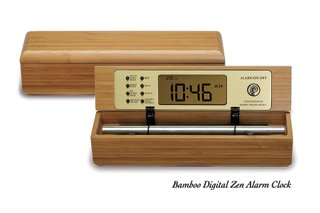 Bamboo yoga and meditation timer
Now & Zen
1638 Pearl Street
Boulder, CO 80302
(800) 779-6383
Posted in Bamboo Chime Clocks, Japanese Inspired Zen Clocks, mindfulness practice, Natural Awakening, Now & Zen Alarm Clocks, Zen Timepiece by Now & Zen, Zen Timers
 torii gate, Meiji-jingu Shrine, Japan A torii is a traditional Japanese gate most commonly found at the entrance or within a Shinto shrine, where it symbolically marks the transition from the sacred to the profane. The presence of a torii at the entrance is usually the simplest way to identify Shinto shrines, and a small torii icon represents them on Japanese road maps. They are however a common sight at Japanese Buddhist temples too, where they stand at the entrance of the temple’s own shrine, called chinjusha and usually very small.
adapted from wikipedia.org
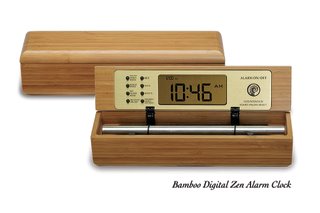 Bamboo Zen Timers, a meditation tool Now & Zen
1638 Pearl Street
Boulder, CO 80302
Posted in Bamboo Chime Clocks, Chime Alarm Clocks, Japanese Inspired Zen Clocks, Yoga Timer, Zen Timers
 creating water gardens, a mindfulness practice One mindfulness practice we enjoy is to create a water garden. It can be calming to find rocks and create a special space for meditation.
Finding a good placement of rocks is similar to arranging a Zen garden or Japanese rock garden. Well-done, intuitive placement of rocks can stimulate a feeling of peace or Zen while also achieving a practical effect.
 Bamboo Zen Clock, a meditation timer
Now & Zen
1638 Pearl Street
Boulder, CO 80302
Posted in Japanese Inspired Zen Clocks, Meditation Timers, Meditation Tools, mindfulness practice, Well-being, Yoga Timer, Zen Gardens, Zen Timers
« Previous Page — « Previous Entries
Next Entries » — Next Page »
|
|
|
|